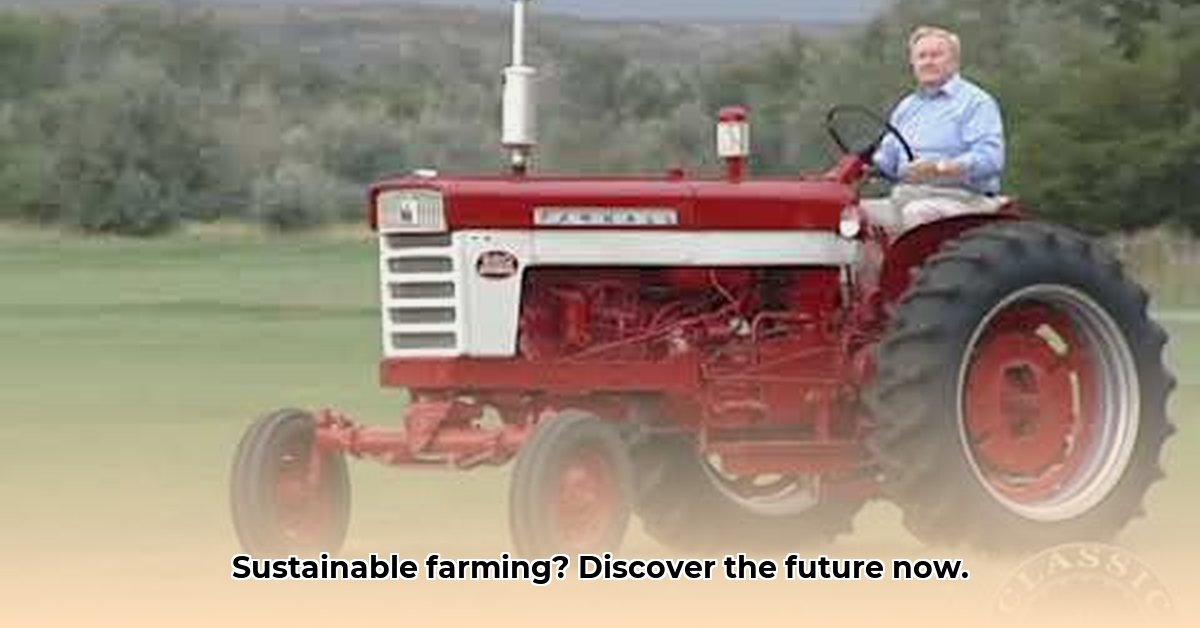
The deep rumble of an International Harvester (IH) tractor is practically a soundtrack to agricultural history. But in our era of heightened environmental awareness, how does the legacy of these iconic machines measure up to modern sustainability standards? This isn't a simple product review; it's an exploration of the profound impact IH tractors had—and continue to have—on farming practices, environmental health, and rural communities. We'll examine their technological advancements, their environmental footprint, and the lasting social consequences of their introduction, ultimately drawing actionable insights for building a truly sustainable agricultural future. For more on specific models, check out this IH Tractor information.
The Farmall: A Revolution on Wheels
Imagine the backbreaking labor of pre-mechanized farming. Then, picture the arrival of the Farmall, a tricycle-designed tractor that revolutionized agricultural efficiency. Its nimble three-wheeled design, a stark contrast to the cumbersome predecessors, drastically improved maneuverability. This seemingly small alteration had a monumental impact, enabling farmers to cultivate more land, increase yields, and reduce labor costs. The Farmall was, for its time, the agricultural equivalent of the Model T Ford – affordable, reliable, and transformative. However, this technological leap wasn't without its complexities and unforeseen repercussions.
"The Farmall's impact was immediate and widespread," says Dr. Amelia Hernandez, Agricultural Historian at the University of Illinois. "It transformed the landscape of American farming, but we need to examine both the positive and negative effects within their historical context." This historical context is crucial in understanding the complete picture.
The Environmental Footprint: A Complex Legacy
While the Farmall undoubtedly increased food production, comprehensively assessing its environmental footprint remains a challenge. Early IH tractors predate stringent emission regulations, making precise data on fuel efficiency and greenhouse gas contributions scarce. To fully understand the environmental burden of these machines, we require comprehensive lifecycle assessments (LCAs) – analyzing every stage from manufacturing to disposal. This lack of complete data limits current assessments. Professor David Miller, Environmental Engineering at Purdue University, notes, "Without comprehensive LCAs, we lack a precise, quantitative understanding of the early IH tractors' environmental impact." This ongoing research is integral to accurately evaluating their long-term sustainability.
Did you know that early IH tractors often contributed significantly higher levels of particulate matter and nitrogen oxides to the atmosphere? This highlights the need for a more thorough analysis.
Beyond the Machines: The Human Story
The IH tractor's arrival also significantly altered rural communities, sometimes with painful consequences. While mechanization boosted efficiency and yields, it also resulted in job displacement for farm workers, creating social and economic upheaval. This shift underscores the complex interplay between technological advancement and its social ramifications. "The increased efficiency of IH tractors didn't benefit everyone equally," explains Dr. Sarah Chen, Sociologist at Iowa State University. “The job losses in rural areas were a significant consequence that deserves continued consideration.” The economic benefits must be carefully weighed against the social costs.
How did the shift to mechanized farming impact family structures and social cohesion in rural communities? This is a question that requires further exploration.
A Legacy of Durability: Lessons for Sustainable Practices
Interestingly, many older IH tractors demonstrate remarkable durability, built to last far longer than many modern products. This inherent longevity offers a valuable lesson in sustainable design, emphasizing repair and reuse over disposable consumption. The emphasis on repair and reuse is increasingly relevant in our modern world.
Dr. Michael Olsen, an expert in sustainable manufacturing at Stanford University, states, "The durability of older IH tractors demonstrates the value of designing for longevity, a key principle of circular economy models. Learning from their design could inspire the creation of more sustainable agricultural machinery."
Building a Sustainable Future: A Collaborative Approach
The IH legacy offers valuable insights for navigating towards sustainable agriculture. This requires a multifaceted, collaborative approach:
Farmers: Implement fuel-efficient upgrades, explore alternative fuels like biodiesel, and adopt precision farming techniques to optimize resource use.
Manufacturers: Integrate comprehensive LCAs into tractor design, invest in low-emission technologies, and develop robust systems for recycling and component reuse.
Governments: Establish effective programs for responsible disposal of obsolete equipment and provide incentives for sustainable farming practices.
Researchers: Conduct ongoing research to fully understand the long-term environmental and social impacts of agricultural technologies.
These steps represent a unified path towards a more resilient and ecologically responsible agricultural future.
Conclusion: An Ongoing Conversation
The story of International Harvester tractors is a dynamic exploration of progress, challenges, and crucial lessons for the future. By acknowledging both the positive and negative impacts, we can build a more sustainable agricultural model. The ongoing research and discussion are essential to refine our understanding and craft a more responsible food system for generations to come. The rumble of an IH tractor serves as a reminder of both the transformative power of technology and the enduring need for sustainability.